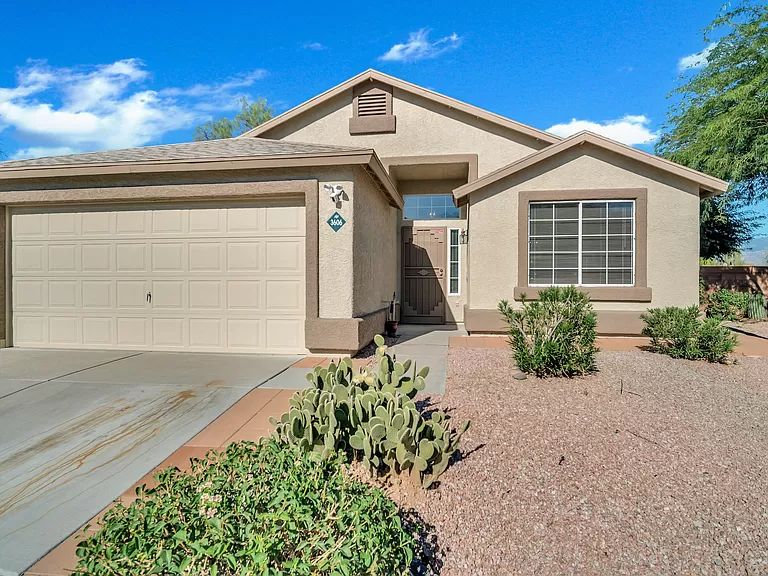Is Your Garage Door Stuck? Below's What to Do First
When your garage door will not open, begin with these essential safety checks prior to attempting any type of repair work. First, ensure no person is standing near the door and that vehicles are clear of the opening. Look for apparent indications of damages like busted panels, bent tracks, or hanging cable televisions. If you see a snapped springtime or significantly damaged parts, stop instantly and call an expert—-- these fixings call for specific tools and competence to handle securely.

Check These 6 Things Before Calling an Expert
Prior to thinking you need expensive repair services, go through this quick analysis checklist that resolves most garage door problems:
-
Power source: Validate the opener is connected in and the electrical outlet is functioning
-
Remote batteries: Replace dead batteries in your remote control
-
Hand-operated lock: Inspect if a person accidentally engaged the hand-operated lock
-
Obstructions: Try to find particles blocking the door's course or sensors
-
Emergency situation launch: Make sure the red emergency cord hasn't been drawn
-
Breaker: Confirm the garage circuit hasn't stumbled
These simple checks resolve roughly 70% of garage door issues without requiring specialist treatment.
10 Usual Factors Your Garage Door Will Not Open Up
Comprehending why your garage door opener isn't working helps you pick the best solution. Right here are the most frequent causes house owners experience:
Dead remote batteries stand for the most basic repair—-- when batteries pass away, the remote can not send out signals to the opener. Power failures or tripped breakers reduced electricity to the motor. Broken springtimes prevent the door from raising effectively and call for instant expert interest. Sensing unit misalignment causes safety systems to obstruct door operation. Track obstructions quit rollers from relocating smoothly. Electric motor overload triggers automated shutoffs when the opener finds resistance. Limitation switch issues confuse the opener regarding door position. Cable television damage interferes with the lifting mechanism. Weather-related problems impact door activity throughout extreme temperature levels. Component wear from age gradually reduces system performance.
Problem # 1: Dead Push-button Control Batteries
When your wall surface switch functions but your remote does not, dead batteries are normally the perpetrator. A lot of garage door remotes utilize either 3-volt lithium or 12-volt alkaline batteries. Eliminate the back cover of your remote and check the battery kind. Replace with fresh batteries and examine the remote. If it still does not function, you might need to reprogram it to your opener. Consult your opener's manual for specific reprogramming directions, as the process differs by supplier.
Trouble # 2: Power Supply Issues
Garage door power problems typically originate from loose connections or stumbled circuits. Check that the opener is strongly linked into its electrical outlet—-- vibration can loosen up links gradually. Test the electrical outlet with an additional gadget to verify it's functioning. Analyze your home's breaker box for stumbled circuits, specifically if you've experienced tornados or power fluctuations. GFCI electrical outlets might have stumbled and require resetting. If the opener has power but won't respond, the problem most likely lies elsewhere in the system.
Trouble # 3: Broken or Damaged Springs
Busted garage door springtimes are amongst the most dangerous components to manage. If you listen to a loud bang from your garage or observe the door really feels extremely hefty when attempting to lift by hand, a springtime has actually likely broken. Torsion springtimes run horizontally over the door, while expansion springtimes remain on either side. Never ever try spring repair work on your own—-- these elements keep tremendous stress that can create serious injury or fatality. Professional replacement generally sets you back $150-$300 yet guarantees your security.
Issue # 4: Blocked Safety And Security Sensing Units
Modern garage doors feature safety sensors that stop closure when things are identified. These sensors can quit the door from opening up if they're filthy, misaligned, or blocked by particles. Clean sensor lenses with a soft towel and ensure nothing obstructs the undetectable beam between them. Inspect that sensors are effectively straightened—-- many have sign lights that reveal connection standing. Sensor problems commonly resolve with easy cleansing and change.
Problem # 5: Track Obstructions or Damages
Garage door tracks guide rollers as the door goes up and down. Dirt, debris, old oil, or tiny objects can jam the system. Examine tracks visually and get rid of any type of blockages with a brush or fabric. Seek damages, flexes, or warping that can hamper smooth procedure. Minor track adjustments are possible for helpful property owners, but considerable damages needs specialist fixing to stop further troubles or safety and security dangers.
Issue # 6: Garage Door Opener Motor Issues
When the garage door electric motor runs however the door does not move, numerous concerns could be responsible. The motor may be overloaded and turning off as a precaution. Equipment wear, particularly in older devices, can stop appropriate procedure. Chain or belt drive issues impact power transmission. If you listen to unusual grinding, clicking, or humming noises, stop utilizing the opener instantly. Electric motor repair services often cost more than replacement, especially for devices over 10 years old.
Step-by-Step Do It Yourself Troubleshooting Overview
Follow this methodical technique to garage door repairing while focusing on safety throughout quick fixes for garage door not closing properly the process:
Action 1: Test the wall surface switch initially. If it works but the remote doesn't, concentrate on remote concerns. If neither works, inspect power supply.
Step 2: Check out the manual release cord. If it's been pulled, the opener is disengaged from the door. Push the cart back to reconnect.
Action 3: By hand test the door by disengaging the opener and trying to raise the door by hand. It should move smoothly and remain in place when half-open.
Tip 4: Examine visible components for damage, paying special interest to springs, wires, and tracks.
Step 5: Inspect all safety features consisting of sensing units, limit switches, and auto-reverse functions.
Step 6: Test different controls (remote, wall surface switch, keypad) to separate the problem resource.
Constantly wear safety glasses and job gloves when performing assessments, and never ever effort repairs on springtimes or high-tension elements.
When to Call an Expert vs. DIY Solutions

Understanding when to call a garage door professional versus trying DIY fixings safeguards both your safety and security and your wallet. Handle these concerns on your own: dead remote batteries, power supply problems, minor track cleansing, sensing unit cleansing and placement, and fundamental lubrication.
Never attempt these repair services on your own: spring substitute or change, cable repairs, significant track adjustment, electric wiring problems, opener electric motor replacement, or any kind of fixing entailing high-tension parts. Specialist service technicians have specialized devices, training, and insurance to take care of unsafe fixings securely.
Think about repair work prices versus replacement prices, particularly for doors over 15 years old. Modern garage doors offer much better safety and security features, energy efficiency, and reliability than older versions.
Emergency Garage Door Solutions
When you're stuck to a garage door that won't open and need immediate access, adhere to these emergency treatments:
Handbook Operation: Draw the red emergency release cord to disengage the opener. This permits hand-operated operation yet needs correct technique to avoid injury. Lift the door gradually and evenly, utilizing leg muscle mass as opposed to your back. Most household doors evaluate 100-150 pounds, making them manageable for the majority of grownups.
Momentary Fixes: If the door opens up manually but won't stay up, prop it open with sawhorses or clamps—-- never use your body or cars as assistances. For doors that will not close completely, make sure the opening is safeguarded if you need to leave.
Emergency situation Service: Several garage door companies use 24/7 emergency situation solution for circumstances involving safety and security issues, entraped vehicles, or total system failings. While a lot more costly than normal service telephone calls, emergency repairs give immediate solutions when required most.
Security Caution: What NOT to Do
Garage door security needs comprehending dangerous fixings that need to never ever be tried by homeowners:
Never try to fix springtimes—-- they save enough energy to trigger deadly injuries when they break or are improperly dealt with. Don't compel a stuck door—-- this can harm the opener, tracks, or door panels, developing a lot more pricey troubles. Stay clear of bypassing security attributes—-- sensing units and auto-reverse mechanisms prevent serious injuries and home damage.
Do not disregard unusual noises—-- grinding, scuffing, or banging audios suggest troubles that aggravate with time. Never ever utilize the door if cords are torn or broken—-- the door could drop suddenly. Do not try electric repair work unless you're a qualified electrical expert—-- garage door openers make use of both 120V family current and low-voltage control circuits.

Preventive Upkeep to Avoid Future Problems
Regular garage door maintenance protects against most usual troubles and extends system lifespan significantly:
Monthly Jobs: Visual inspection of all elements, testing auto-reverse security features, examining and tightening up equipment, and cleaning tracks and sensors.
Quarterly Jobs: Lubing all relocating parts with ideal garage door lubricating substance, screening guidebook procedure, and examining climate sealing.
Annual Tasks: Professional inspection and tune-up, springtime change if required, and opener maintenance including belt or chain adjustment.
Seasonal Jobs: Preparing for weather extremes, inspecting insulation, and changing opener settings for temperature level adjustments.
Regular upkeep prices much less than emergency situation repair work and makes sure dependable operation year-round.
Garage Door Will Not Open Frequently Asked Questions
Why won't my garage door open with the remote but deals with the wall surface button?
This normally shows dead remote batteries, signal disturbance, or the requirement to reprogram the remote. Inspect batteries first, then consult your opener handbook for reprogramming directions.
Can I by hand open my garage door if the power is out?
Yes, draw the red emergency situation release cable to disengage the opener, then lift the door manually. Be planned for the door's complete weight and lift with proper method to prevent injury.
How do I recognize if my garage door springtime is broken?
Indications consist of a loud bang from the garage, the door feeling extremely hefty when raising by hand, noticeable gaps in the spring coils, or the door just opening up a few inches before quiting.
Is it risk-free to utilize my garage door if it won't open up completely?
No, partial procedure suggests mechanical issues that might get worse all of a sudden. Quit making use of the door and have it checked by a professional to avoid further damage or injury.
What should I do if my garage door opens but will not shut?
Examine safety and security sensors for blockages or imbalance, check out the tracks for particles, and examine the auto-reverse feature. If these don't fix the issue, consult a professional.
Just how much does it set you back to take care of a garage door that will not open?
Expenses vary commonly depending on the issue: battery replacement ($5-$10), expert diagnosis ($50-$100), spring substitute ($150-$300), or opener replacement ($200-$500).
Can weather impact my garage door's capacity to open?
Yes, extreme cold can enlarge lubricating substances and impact steel parts, while warmth can cause growth problems. A lot of issues solve as temperature levels normalize, however persistent issues may require expert focus.
Why does my garage door open a few inches after that quit?
This usually shows damaged springs, restriction button problems, or track obstructions. The opener's safety and security attributes quit operation when resistance is detected, avoiding damage to the motor or door.
Obtain Professional Help for Complicated Issues
When DIY repairing doesn't solve your garage door troubles, specialist technicians supply the proficiency and devices needed for secure, long-term repair work. Certified professionals detect concerns accurately, utilize manufacturer-approved components, and offer guarantees on their job.
Professional services consist of: comprehensive system assessments, spring and cable substitute, opener fixing and substitute, track placement and replacement, electric troubleshooting, and emergency solution phone calls.
What to anticipate: in advance rates, accredited and insured service technicians, same-day solution for many repair work, and follow-up upkeep suggestions.
The majority of garage door firms supply complimentary quotes for major repair services and can offer immediate solutions for urgent issues affecting home safety and security or car gain access to.
Getting Your Garage Door Working Again
A garage door that won't open up does not have to ruin your day or damage your spending plan. Beginning with basic troubleshooting actions like inspecting power, changing batteries, and examining for apparent obstructions. Lots of problems have fast do it yourself remedies that restore regular procedure within mins.
Nevertheless, recognize when expert assistance is required—-- particularly for spring-related concerns, electrical troubles, or facility mechanical failures. Attempting dangerous repairs yourself risks severe injury and typically produces a lot more expensive issues.
Normal upkeep stops most garage door issues and makes certain reliable procedure for years to come. When problems do happen, address them immediately to avoid more costly repair work and maintain your home's safety and benefit. Whether you need a simple battery replacement or complete system overhaul, options exist to get your garage door working efficiently once more.